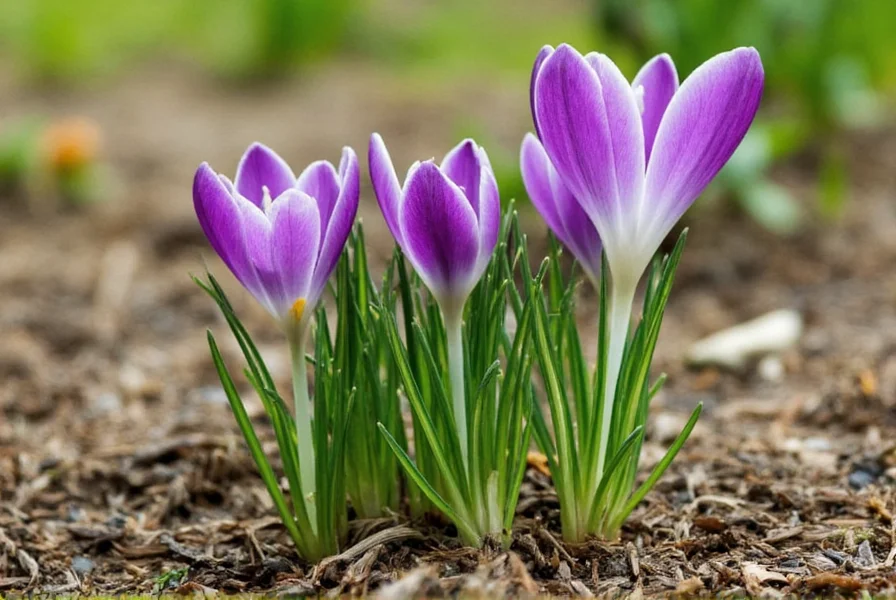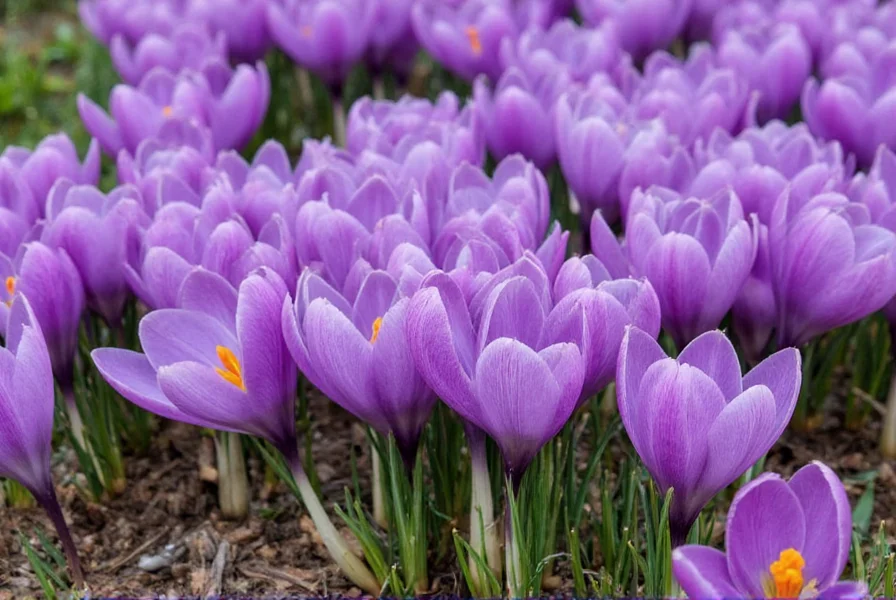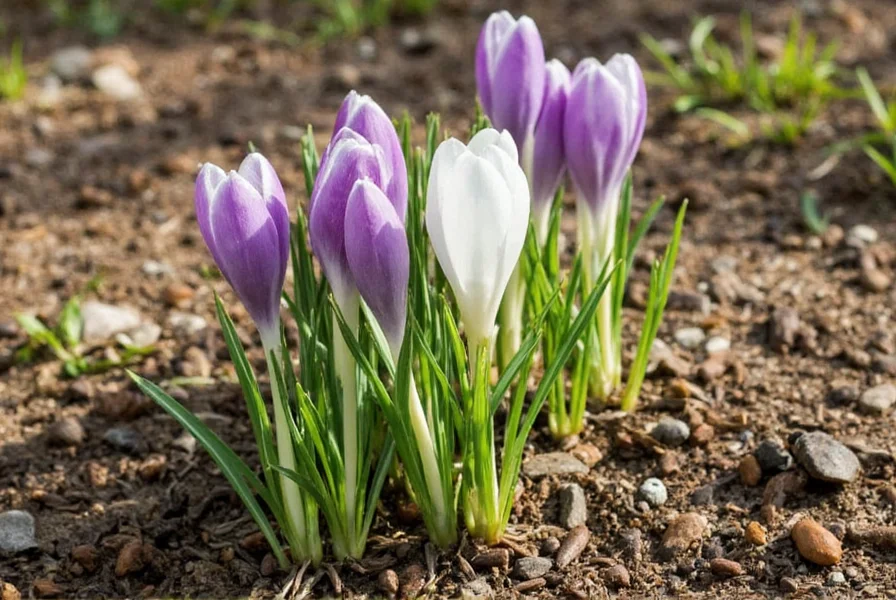Cultivating Crocus sativus, the sole source of genuine saffron, represents one of agriculture's most meticulous yet rewarding endeavors. This delicate perennial flower produces the world's most expensive spice by weight, with each crimson stigma requiring careful hand-harvesting at dawn. Understanding the precise conditions this plant demands separates successful saffron growers from those facing disappointing yields.
Understanding Crocus sativus: The Saffron Crocus
Unlike common garden crocuses, Crocus sativus is a sterile triploid that cannot reproduce through seeds. This unique characteristic means all propagation occurs through corm division. The plant grows to approximately 15-25 cm in height, producing purple flowers with vivid red stigmas that become saffron when dried. Each flower yields only three stigmas, explaining saffron's extraordinary value—approximately 150,000 flowers are needed to produce just one kilogram of dried saffron.

Climate Requirements for Optimal Growth
Crocus sativus thrives in regions with distinct seasonal patterns. The ideal climate features:
- Hot, dry summers (25-35°C) for dormancy period
- Cool springs (10-20°C) for active growth
- Autumn temperatures between 15-25°C during flowering
- Minimal rainfall during flowering season to prevent flower damage
Mediterranean climates prove most suitable, though successful cultivation occurs in diverse regions from Iran to Spain to Kashmir. The plant requires approximately 200-250mm of annual rainfall, preferably distributed outside the flowering period. Areas with heavy autumn rains present significant challenges for saffron cultivation.
Soil Preparation and Requirements
Proper soil conditions form the foundation of successful saffron cultivation. The ideal soil profile includes:
| Soil Characteristic | Optimal Range | Notes |
|---|---|---|
| pH Level | 6.0-8.0 | Slightly alkaline conditions preferred |
| Drainage | Excellent | Waterlogged soil causes corm rot |
| Texture | Sandy loam | Avoid heavy clay soils |
| Organic Matter | 2-4% | Improve with compost before planting |
Before planting, amend the soil with well-rotted compost or manure to improve structure and fertility. Deep plowing to 30-40 cm depth ensures proper aeration and drainage. Raised beds prove beneficial in areas with heavier soils or higher rainfall.
Planting Process: Timing and Technique
The planting window for Crocus sativus corms occurs in late summer, typically August to September in the Northern Hemisphere. Follow these steps for optimal establishment:
- Select healthy corms measuring 2.5-4.5 cm in diameter
- Plant at 15-20 cm depth, deeper in sandy soils, shallower in clay
- Space corms 10-15 cm apart in rows 20-30 cm apart
- Position corms with the basal plate facing downward
- Cover with soil and water thoroughly
Commercial growers typically use 3-5 tons of corms per hectare. Smaller corms (less than 2.5 cm) require one additional year before producing flowers. Proper planting depth proves critical—too shallow invites frost damage, while too deep delays emergence.
Water Management Throughout Growth Cycle
Water requirements vary significantly throughout the saffron growth cycle:
- Planting to emergence: Moderate watering to establish roots
- Active growth period: Regular watering to maintain soil moisture
- Flowering period: Minimal watering to prevent flower damage
- Dormancy period: No supplemental water required
Overwatering represents the most common cultivation mistake, leading to corm rot and fungal diseases. Drip irrigation systems provide optimal moisture control while conserving water. During flowering, avoid watering entirely if possible, as moisture causes flowers to close prematurely.
Fertilization Requirements
While saffron crocus doesn't demand heavy fertilization, proper nutrient management enhances yield and longevity. Implement this fertilization schedule:
- At planting: Incorporate 20-30 tons of well-rotted manure per hectare
- Spring growth: Apply balanced NPK fertilizer (10-10-10) at 100-150 kg/ha
- Post-harvest: Add potassium-rich fertilizer to strengthen corms
Excessive nitrogen promotes excessive foliage growth at the expense of flower production. Soil testing before planting helps determine specific nutrient requirements for your location. Organic cultivation methods often yield superior saffron quality with enhanced flavor compounds.
Pest and Disease Management
Saffron crocus faces several biological threats that require vigilant monitoring:
- Corm rot: Caused by Fusarium and Penicillium fungi, prevent with proper drainage
- Leaf blight: Manage with copper-based fungicides if severe
- Rodents: Protect corms with physical barriers or natural repellents
- Weeds: Control through mulching and careful hand-weeding
Integrated pest management proves most effective, combining cultural practices with minimal chemical intervention. Crop rotation every 3-4 years significantly reduces disease pressure. Organic growers often report fewer pest problems due to healthier soil ecosystems.
Harvesting Techniques: Precision and Timing
The saffron harvest represents the most labor-intensive phase of Crocus sativus cultivation. Flowers open at dawn and close by mid-morning, requiring daily harvesting at first light. Follow these best practices:
- Hand-pick flowers early in the morning while still closed
- Use shallow baskets to prevent flower damage
- Process flowers immediately after picking (within 2-3 hours)
- Remove stigmas carefully using fingernails or small tools
- Dry stigmas within hours of harvesting
Each flower yields only three stigmas, requiring approximately 400 flowers to produce one gram of dried saffron. The entire flowering period typically lasts 3-6 weeks, with peak harvest occurring over 10-15 days. Experienced harvesters can process 150,000 flowers per day, yielding about 0.7 kg of dried saffron.

Post-Harvest Processing and Storage
Proper processing determines saffron quality and market value. The critical steps include:
- Stigma separation: Remove red stigmas from flowers immediately after harvest
- Drying: Use traditional methods (sun-drying) or controlled dehydration at 40-50°C
- Storage: Keep in airtight containers away from light and moisture
- Grading: Classify based on color intensity, moisture content, and purity
Drying must reduce moisture content to 8-12% without damaging the delicate compounds. Properly stored saffron maintains quality for 2-3 years, though peak flavor occurs within the first year. Commercial growers often invest in specialized drying equipment to ensure consistent quality.
Yield Expectations and Economic Viability
Understanding realistic yield expectations proves essential for prospective saffron growers. Production varies significantly based on cultivation practices:
- Year 1: 0.5-1 kg dried saffron per hectare (establishment year)
- Year 2: 3-5 kg dried saffron per hectare
- Years 3-5: 8-12 kg dried saffron per hectare (peak production)
- Years 6+: Gradual decline requiring corm replacement
Commercial viability depends on multiple factors including production costs, market access, and quality standards. Small-scale growers often achieve premium prices through direct marketing and quality differentiation. Organic certification can increase market value by 20-30% in specialty markets.
Common Cultivation Challenges and Solutions
Growers frequently encounter these challenges with practical solutions:
- Low flowering rate: Ensure proper corm size, planting depth, and summer dormancy conditions
- Poor stigma quality: Address through proper drying techniques and moisture control
- Corm degeneration: Rotate fields every 4-5 years and select healthy corms annually
- Climate variability: Implement microclimate management through mulching and windbreaks
Successful saffron cultivation requires patience and attention to detail. The first harvest typically occurs one year after planting, with peak production reached in years 3-5. Many growers report that understanding local microclimates represents the key to overcoming regional challenges.
Conclusion: The Path to Successful Saffron Cultivation
Crocus sativus cultivation demands precision, patience, and respect for the plant's specific requirements. By understanding the intricate balance of climate, soil, and cultivation practices, growers can produce high-quality saffron that commands premium prices. The most successful saffron operations combine traditional knowledge with modern agricultural science, focusing on quality rather than quantity. Whether cultivating a small garden plot or establishing a commercial operation, attention to detail throughout the entire growth cycle determines final product quality and economic success.
Frequently Asked Questions
How long does it take to harvest saffron after planting Crocus sativus?
Saffron flowers typically appear in the first autumn after planting, approximately 6-8 weeks following corm planting in late summer. The first harvest occurs one year after planting, with peak production reached in years 3-5 of the cultivation cycle.
What is the ideal soil pH for growing saffron crocus?
The ideal soil pH for Crocus sativus cultivation ranges from 6.0 to 8.0, with slightly alkaline conditions (7.0-8.0) generally producing the best results. Proper soil drainage proves more critical than exact pH levels, as waterlogged conditions quickly lead to corm rot regardless of pH.
Can saffron crocus be grown indoors or in containers?
Yes, saffron crocus can be successfully grown in containers with proper drainage, though yields will be significantly lower than field cultivation. Use deep pots (at least 20 cm) with well-draining potting mix, and provide full sun exposure. Container-grown plants require more careful watering management but offer protection from extreme weather conditions.
How much saffron can be harvested from one Crocus sativus plant?
Each Crocus sativus plant typically produces 1-3 flowers per season, with each flower yielding three stigmas. On average, 10-15 flowers produce approximately 0.1 grams of dried saffron. Commercial growers achieve 8-12 kg of dried saffron per hectare during peak production years (years 3-5).
What are the most common mistakes in saffron cultivation?
The most common cultivation mistakes include improper planting depth, overwatering during dormancy, harvesting flowers too late in the day, inadequate drying techniques, and failing to rotate fields every 4-5 years. Many beginners also use corms that are too small, resulting in poor flowering during the first production cycle.











 浙公网安备
33010002000092号
浙公网安备
33010002000092号 浙B2-20120091-4
浙B2-20120091-4